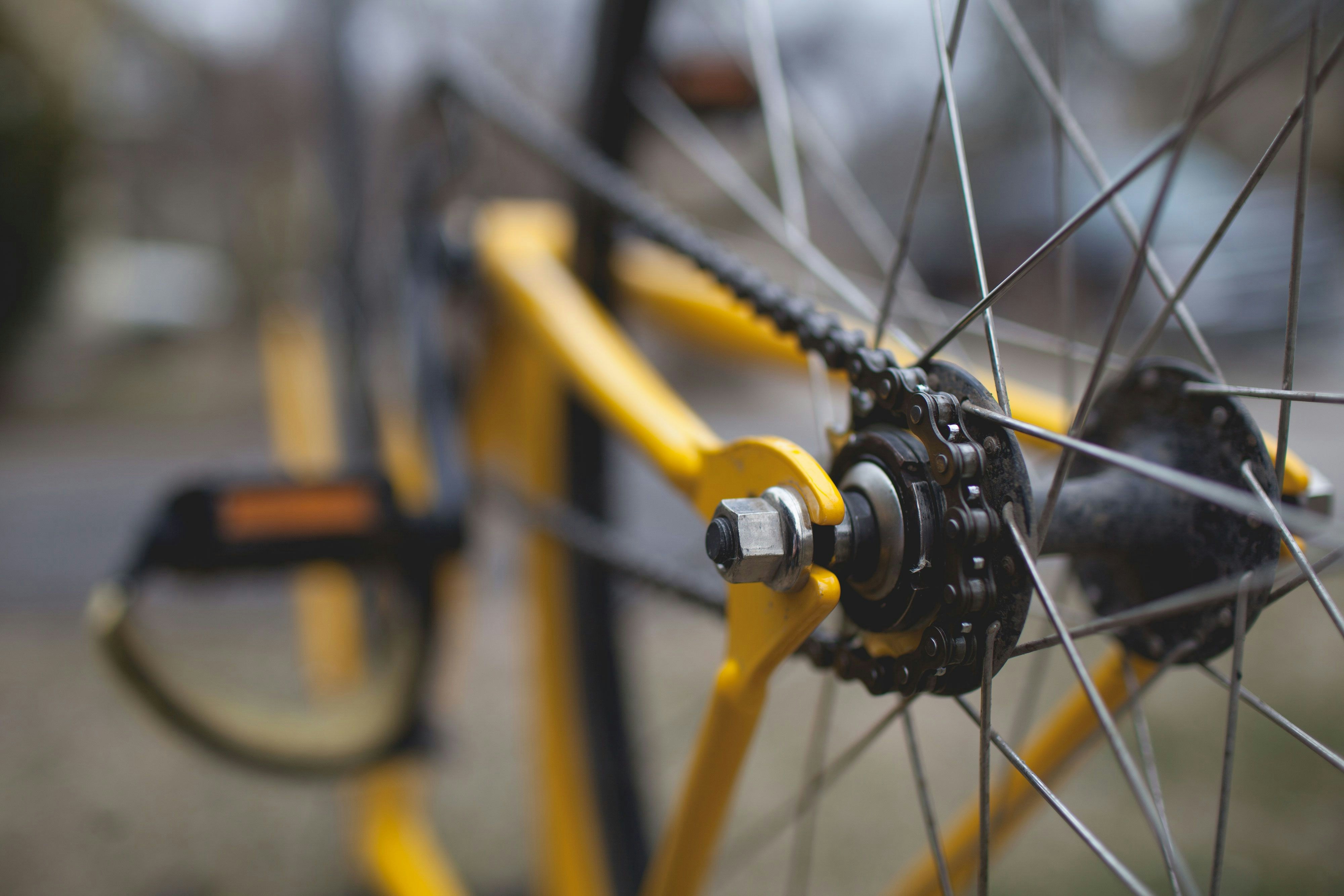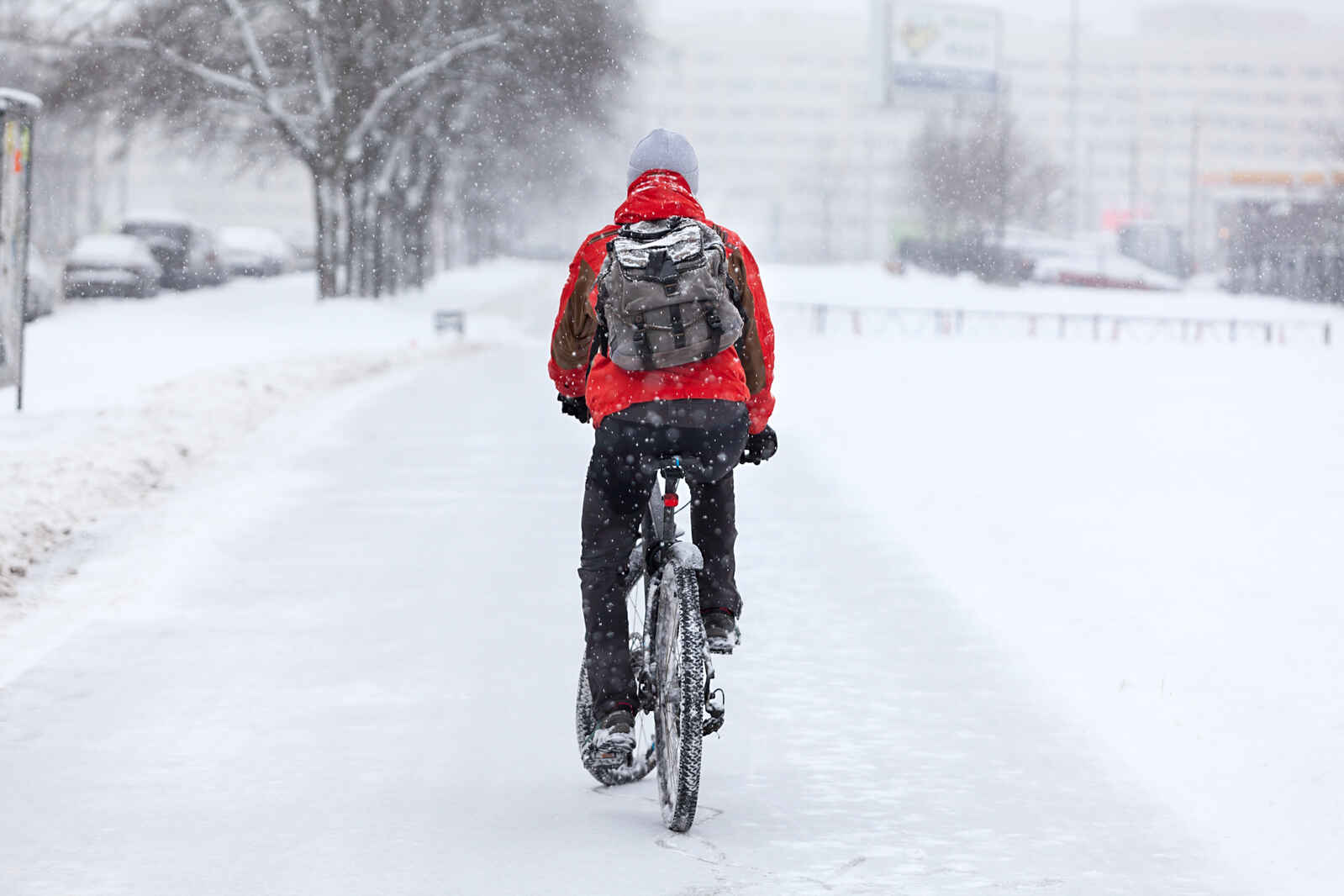December 2, 2025
•
8 minute read
How to Fix Gears on a Bike
You've likely been there: cruising down your favourite trail when a nasty gear skip throws off the entire ride.
Jake Fieldsend
Founder & CFO
You've likely been there: cruising down your favourite trail when a nasty gear skip throws off the entire ride. Or maybe you’re that cyclist who often hears that haunting clicking, wondering if it's time to get a professional involved. With proper gear maintenance, you can enhance your experience and keep your rides smooth. In this guide, we’ll break down everything you need to know about bike gears – from understanding how they function to fixing common issues yourself.
1. Understanding Bike Gears
1.1 What are bike gears?
Bike gears are the backbone of your riding experience. Simply put, they're the systems that allow you to modulate the energy it takes to pedal at various speeds. Think of gears as your bike’s way of assisting you on different terrains.
- Low gears: These are your ‘easy’ settings, perfect for climbing hills with less effort.
- High gears: These allow you to pedal harder to achieve higher speeds, ideal for descending slopes or accelerating on flats.
The joy of cycling rests heavily on the versatility your gears provide, making them crucial for any bike ride, whether you're commuting in the city or tackling rugged mountain paths.
1.2 How do gears work?
Gears function through the use of two crucial components: the derailleur, which moves the chain across different sprockets, and the shifters, which allow you to control that movement. Together, these components help you maintain a steady cadence by changing the resistance on the pedals.
- Derailleur: Moves the chain between larger and smaller chainrings.
- Shifters: Located on your handlebars, these enable you to change gear with a push or twist motion.
Keep in mind that regular cleaning and lubrication of these parts is essential to ensure seamless gear shifting. Dirt and grime build-up can lead to poor performance, so maintaining this area can save you from unnecessary headaches.
1.3 Why is it important to keep gears in good condition?
Maintaining your bike gears isn't just for performance – it's for safety as well. Good gear functionality can prevent a slip or slide that could lead to potential injuries. Moreover, poor gear maintenance can lead to more expensive repairs or even component replacements.
- Enhanced Safety: Poorly maintained gears can cause unexpected shifts or slips.
- Cost-Efficiency: Regular upkeep can prevent costly damage.
- Optimal Performance: Well-maintained gears make for smoother, more enjoyable rides.
Starting with the basics of understanding and maintaining your gears can significantly improve your cycling experience. If you're ever in doubt, seeking the aid of a professional can save a lot of time and ensure your gear is up to scratch.
Consider using Bikebook to find experienced local mechanics if your gear issues seem out of hand. Their platform allows you to easily compare options and choose the right service for your needs without running the risk of further damage.
2. Steps to Fix Gears on a Bike
2.1 Diagnosing the Problem
When it comes to diagnosing gear issues, patience and observation are your best tools. Kick-start your diagnosis by checking for misalignment issues, which are a common culprit for erratic gear shifting. Ensure your bike is on a stand for better visibility. Start by examining if your derailleur hanger is bent, as this can cause significant issues. A bent hanger will make your chain jump between gears unpredictably.
Pro tip: Hold a ruler against the derailleur's pulleys to see if they align vertically; any discrepancy might indicate a bent derailleur or hanger.
Noise plays a crucial role in diagnosing gear problems. Listen carefully when you shift gears. Ideally, changes should be smooth and quiet. If there's grinding or skipping, it’s likely a sign of inadequate cable tension or worn-out components.
Conduct a visual inspection of your gear cables, ensuring there are no frays or kinks. If they appear fine but issues persist, lubricate the chain and components thoroughly — sometimes the simplest solutions can solve irritating problems. For further fine-tuning, refer to a gear adjustment guide or consult a local mechanic.
2.2 Adjusting the Derailleur
Adjusting the derailleur is often necessary to resolve gear shifting troubles. Start with the barrel adjuster on your handlebar: if the chain hesitates while shifting up, turn the adjuster counterclockwise. Conversely, stubborn shifts down require a clockwise turn. This tweak alters the cable tension and can often clear minor shifting issues.
If barrel adjustments fail, turn your attention to the limit screws on the derailleur itself, marked typically as 'H' (high) and 'L' (low). These screws control the range of motion the derailleur has across the cassette or chainrings. Typically, you’ll want to ensure these limits match the extremes of your chain movement. Misalignment here can result in either the chain refusing to change to your lowest or highest gears or even jumping off entirely. It's a precise adjustment, so take your time.
Pro Tip: If you're feeling overwhelmed, try searching for a local mechanic using Bikebook. It can connect you to thousands of mechanics perfectly suited to get your derailleur dialled in without the fuss.
2.3 Changing Gear Cables
If your shifters still feel sluggish or stubborn, the gear cables might need replacing. Cables degrade over time due to dirt and moisture exposure, affecting shifting quality. To replace them, first, shift your bike to the smallest chainring and cog to relieve tension. Unscrew the bolt that secures the cable on the derailleur and gently remove the old cable.
When inserting the new cable, ensure it slides smoothly through its housing. If the housing is damaged or excessively worn, it's wise to replace it too. Once the new cable is in, tension it properly by adjusting the barrel adjuster again, similar to a derailleur adjustment. Too loose or too tight, and you'll encounter shifting issues again.
Pro tip: Regularly inspect your cables and housings for wear. Consider replacing them as part of routine annual maintenance, which can save you plenty of headaches down the line! And, if the task feels daunting, Bikebook can quickly help you find a qualified local mechanic to assist.
3. When to Seek Professional Help
3.1 Complex Gear Issues
Bike gears can be complex, especially when you encounter intricate problems like persistent derailleur misalignment or stubborn skipping gears. Such issues often require a deeper knowledge of bike mechanics. If your initial DIY attempts keep falling short, seeking professional intervention might save you more time and frustration.
- Persistent Misalignment: If your derailleur won’t stay aligned even after repeated tweaks.
- Unusual Noise: Clicking or grinding sounds that don't vanish point to something amiss.
- Skips and Jumps: Constant chain slipping may indicate complex internal faults.
Also, regular servicing by experts not only resolves these complicated issues but also ensures your bike operates smoothly for every ride. A professional can spot hidden problems that might escalate, saving you costly repairs down the line.
Pro-tip: If you notice any wear on the chain or cassette causing gear problems, it's crucial to consult a mechanic who can accurately diagnose the issue before it worsens.
3.2 The Advantage of Using Bikebook for Professional Assistance
Why go through endless web searches trying to find a trustworthy mechanic? With Bikebook, finding the right help is a hassle-free affair. This platform lets you compare local mechanics effortlessly and connects you to skilled technicians based on real reviews and specific needs.
- Local Expertise: Connects you with mechanics who know the terrain. Local knowledge can improve repair quality.
- Real Reviews: Trustworthy experiences shared by fellow cyclists ensure your bike is in good hands.
- Free Service: No hidden fees or awkward negotiations. Just straightforward connections to the right professionals.
According to recent statistics, 43% of cyclists found their ideal bicycle mechanics through online platforms like Bikebook, cutting down searching time significantly (Cyclist Statistics Report, 2022).
Pro-tip: Always check out multiple reviews and even reach out to a few mechanics to see who suits your communication style best.
3.3 Maintaining Your Bike Gears with Regular Servicing
Keeping your bike's gears in top form requires more than just an occasional fix. Regular workshops can extend your bike's lifespan and performance. Scheduling systematic check-ups can prevent minor issues from morphing into major headaches.
- Consistency Counts: Monthly tweaks or checks can prevent grinding and skipping.
- Professional Tune-ups: Experts spot unseen faults, offering a longer-term solution.
- Cost-Effective: Regular maintenance often saves money by avoiding major repairs.
Remember, your bicycle is an investment worth caring for. Understanding the importance of routine maintenance will ensure your trusted two-wheeler remains road-ready and safe for all your adventures.
Have you had enough of agonising gear troubles? A well-timed check-up by a professional mechanic found through Bikebook can make all the difference. You can discover a trusted bike service near you by clicking this link.
Frequently Asked Questions
How to fix bike gears that won't shift?
First, check if the gear cables are too loose or frayed. Tighten or replace them if needed. Next, inspect the derailleur alignment; it might need adjustment. If they're still stuck, cleaning the drivetrain and lubricating the chain could help unjam the shifters. Seek professional help if these solutions don’t work.
How do you adjust bike gears?
To adjust bike gears:
- Shift Chain: Place the chain on the smallest ring.
- Inspect Cable Tension: Loosen and retighten if needed.
- Align Derailleur: Ensure it's parallel to the chain.
- Fine-tune Barrel Adjuster: Turn to adjust tension.
- Test Gears: Check shifting for smoothness and re-adjust if necessary.
How do I fix my bike back gear?
Check if the derailleur is bent, which often causes shifting issues. Tighten the hanger bolts, then ensure the cable tension is just right. Clean and lubricate your chain thoroughly. If manual fixes fail, replace the derailleur or get a professional mechanic to take a look.
Why doesn't my bike go into gear?
Possible reasons include:
- Cable Slack: Ensure cables are neither too tight nor too slack.
- Derailleur Misalignment: Needs realignment or replacing.
- Stiff Chain Links: Clean and oil them to boost mobility.
- Worn Components: Worn gear rings may affect shifting, needing replacement.



